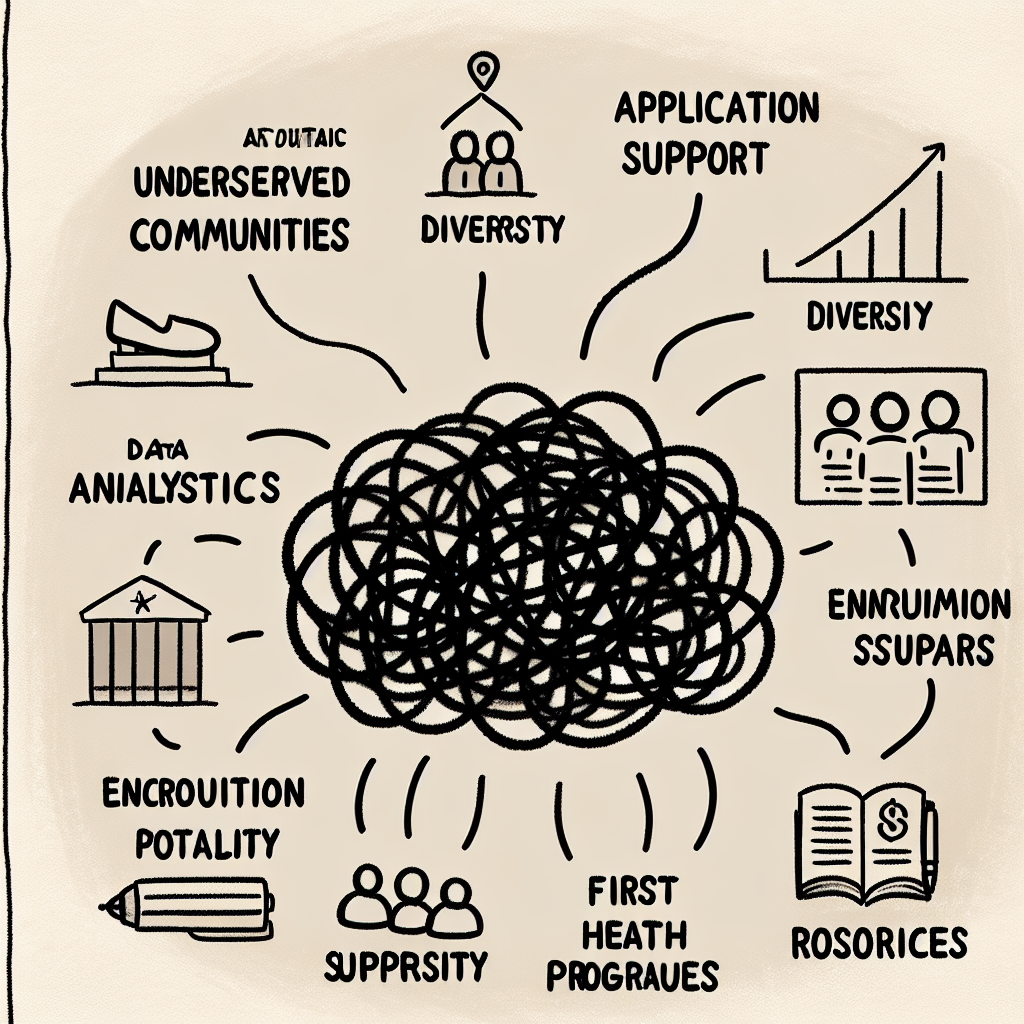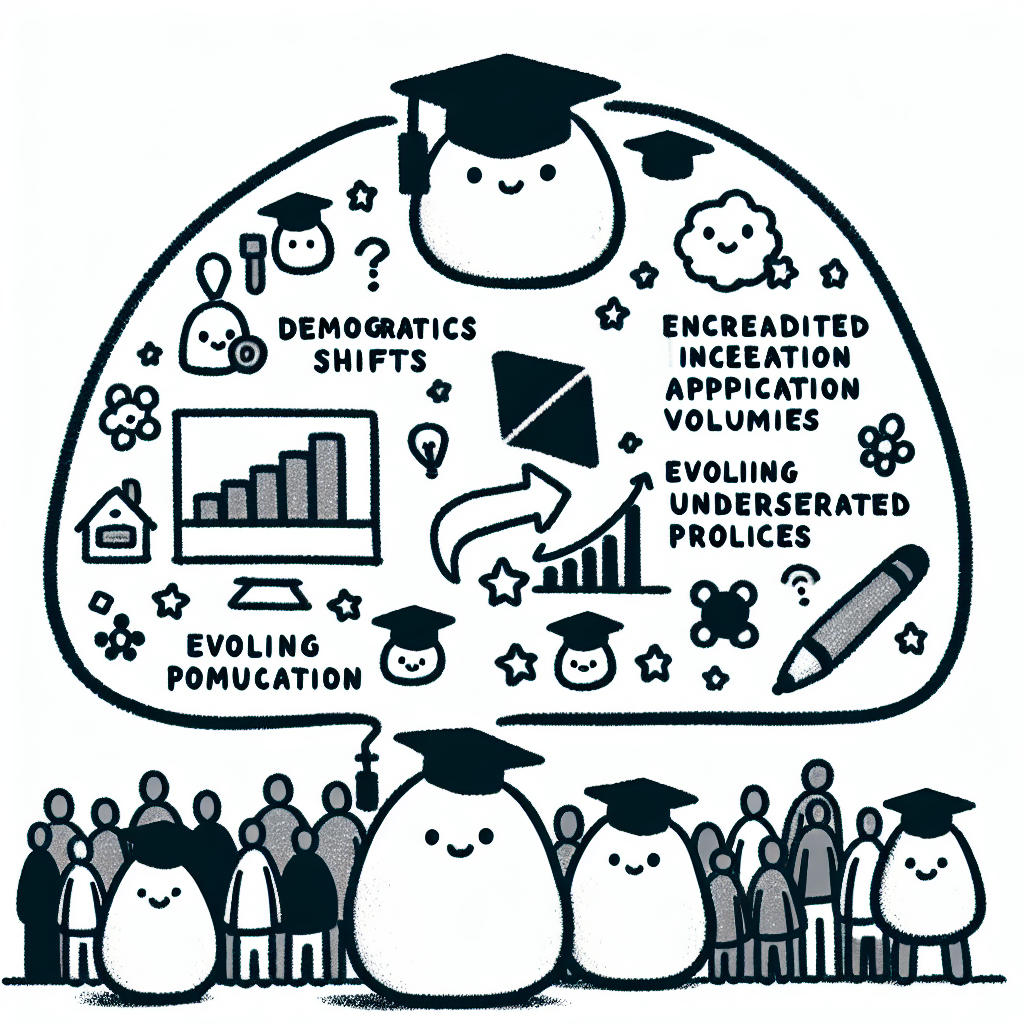Introduction
The landscape of college admissions 2025 is undergoing significant transformation. In the wake of the COVID-19 pandemic, U.S. colleges and universities are adjusting to new realities shaped by health recovery, shifting demographics, and evolving policy frameworks. These forces are redefining how institutions evaluate applicants, allocate resources, and pursue diversity and inclusion.
The post-pandemic era has accelerated changes in application patterns, with an increase in test-optional policies and greater reliance on holistic review processes. Simultaneously, demographic shifts—including declining birth rates and regional population changes—are influencing enrollment strategies and institutional priorities. On the policy front, state and federal initiatives are reshaping access, affordability, and accountability in higher education.
This guide provides a comprehensive overview of the current trends shaping college admissions 2025. It synthesizes key data points, policy developments, and their implications for students, families, and higher education institutions. By understanding these dynamics, stakeholders can better navigate the competitive and rapidly evolving admissions landscape.

Application Trends in 2025
Surge in Application Volumes
College admissions in 2025 reflect a continuation of the rising trend in application volumes seen in previous years. In Fall 2022, nearly 1 million more applications were submitted by first-time students compared to Fall 2021, signaling heightened competition and increased interest in higher education opportunities (NCES, 2023). This surge is also driven by students adopting multi-application strategies, applying to a greater number of institutions to improve their chances of acceptance amid heightened selectivity.
Role of the Admissions Research Consortium (ARC)
The Admissions Research Consortium (ARC) has provided valuable insight into these shifting patterns. Analysis of data from Fall 2020 to 2021 reveals broad-based increases in applications, admission offers, and enrollments across the board (College Board, 2023). Notably, the growth spans nearly all student subgroups, indicating that the expansion in college admissions activity is not limited to a particular demographic.
Rise of Test-Optional and Test-Blind Policies
A key driver of change in college admissions 2025 is the widespread adoption of test-optional and test-blind policies. These shifts mark a national move away from standardized testing as a central admissions criterion. For instance, California reported only 26% SAT participation among the Class of 2025, underscoring the declining emphasis on these tests (College Board, 2023). This trend reflects a broader reevaluation of equity and access in the admissions process.

Admission Policies and Selection Criteria
Legacy Admissions Under Scrutiny
Legacy admissions continue to be a contentious aspect of college admissions in 2025. According to recent data, 579 institutions still consider legacy status in their admissions process, including 553 four-year, mostly private nonprofit schools Source. This practice has drawn increasing public and legislative criticism, with opponents arguing that it undermines fairness and equity by favoring applicants with familial ties to alumni over equally or more qualified candidates without such connections.
Holistic Review and New Emphases
In response to growing concerns about fairness, many colleges have expanded their use of holistic review processes in 2025. These approaches assess applicants based not only on academic metrics but also on extracurricular involvement, personal essays, demonstrated interest in the institution, and community engagement. There is a stronger emphasis on evaluating character, resilience, and the applicant’s potential contributions to campus diversity. This shift reflects a broader effort to understand students as whole individuals rather than as a set of numbers.
Shift Toward Equity and Access
The landscape of college admissions in 2025 is also marked by a deliberate shift toward equity and access. Institutions are actively reevaluating their outreach and recruitment strategies to better connect with underrepresented and first-generation students. Insights from the Access and Retention Consortium (ARC) have driven many colleges to enhance support systems aimed at improving access and long-term success for these students. These changes are part of a broader commitment to creating more inclusive and representative student bodies.

Enrollment Dynamics and Demographic Shifts
Enrollment Growth Post-COVID
College admissions 2025 are being shaped by notable enrollment increases following the disruptions caused by the COVID-19 pandemic. According to data from the Admissions Research Consortium (ARC), most demographic groups have shown enrollment growth, signaling a broad-based recovery from the declines experienced during the pandemic years Source. Four-year institutions, in particular, have seen significant rebounds as students return to traditional college pathways.
Changing Student Demographics
The college admissions 2025 landscape is also being influenced by shifting student demographics. There has been a noticeable rise in enrollment among Hispanic, Black, and first-generation college students. These trends suggest progress toward greater diversity and inclusion within higher education. Additionally, regional population changes are affecting local colleges differently, with some areas experiencing enrollment surges while others face continued challenges due to declining high school graduate numbers.
Implications for Campus Life and Support Services
As the demographic makeup of student bodies evolves, colleges are responding with enhanced support structures. The college admissions 2025 environment is prompting institutions to invest in culturally competent advising and expand mental health services to better support a diverse student population. There is also a growing emphasis on bridge programs and academic support initiatives designed to help students from underrepresented backgrounds succeed once enrolled.

Financial Aid and Affordability in 2025
Trends in College Pricing and Student Aid
In the context of college admissions 2025, financial aid continues to play a critical role in student decision-making. In the 2023–24 academic year, a total of $256.7 billion in student aid was distributed across the United States. This included federal and nonfederal grants, loans, education tax benefits, and work-study funds (Source). A notable trend is the increasing emphasis on need-based aid, with institutions adopting more aggressive tuition discounting strategies to attract and retain students from diverse socioeconomic backgrounds.
FAFSA Simplification and Policy Changes
The college admissions 2025 cycle is also marked by significant changes to the Free Application for Federal Student Aid (FAFSA). The redesigned FAFSA aims to simplify the application process, reduce administrative burdens, and more accurately reflect student financial need. These updates are expected to broaden eligibility for aid and improve access to federal funding. Additionally, there is a push for greater transparency in financial aid offers, including clearer language and standardized formats. Enhanced net price calculators are helping families make more informed decisions by providing better estimates of actual costs.
Rising Cost Concerns
Rising costs remain a top concern in college admissions 2025. Inflation has driven up tuition rates, housing expenses, and meal plan prices, putting additional strain on students and families. In response, many prospective students are prioritizing affordability by considering in-state public universities, community colleges, and alternative credential programs. These options are increasingly viewed as viable pathways to career readiness without incurring unsustainable debt.

Implications for Students and Families
Strategic Application Planning
As the landscape of college admissions 2025 continues to evolve, students and families must prioritize a strategic approach to application planning. A well-balanced college list remains critical—this means including a thoughtful mix of reach, match, and safety schools. Reach schools are those where a student's academic credentials fall below the institution's averages; match schools represent a good alignment between student profile and institutional expectations; and safety schools are those where a student exceeds typical admissions criteria.
In addition, applicants should carefully evaluate the trade-offs between early decision (ED) and early action (EA) options. Early decision is binding and best suited for students who have a clear first-choice school and are prepared to commit. Early action, by contrast, is non-binding and allows students to apply early without the obligation to enroll. Each pathway can offer strategic advantages depending on the student's readiness and preferences.
Standardized Testing Strategy
With many institutions maintaining test-optional policies into the 2025 admissions cycle, students must decide whether submitting standardized test scores will enhance their applications. This decision should be guided by both institutional policies and individual strengths. For example, strong scores may bolster an application, particularly at test-optional schools where scores are still considered if submitted.
Regional testing trends also play a role. In states like California, participation in standardized testing remains comparatively low, impacting how students from these areas may approach test submission. Understanding regional norms and how they influence admissions can help students make informed choices.
Financial Preparation and Literacy
Financial planning is a vital component of the college admissions 2025 process. Students and families are strongly encouraged to complete the Free Application for Federal Student Aid (FAFSA) as early as possible. Early completion can improve access to institutional aid, work-study opportunities, and other forms of financial support.
Additionally, comparing financial aid packages across institutions is essential. Families should use standardized tools such as the Net Price Calculator and the College Scorecard to evaluate costs, aid offers, and long-term financial outcomes. These tools help assess affordability and support informed decision-making throughout the admissions process.

VI. Institutional Strategy and Policy Recommendations
A. Enhancing Equity and Access
To improve equity in college admissions 2025, institutions should prioritize outreach to underserved communities. This includes expanding partnerships with high schools in low-income areas, increasing the availability of application support services, and offering more need-based financial aid. Reconsidering legacy admissions and similar practices that disproportionately benefit privileged applicants is also critical. Eliminating these policies can help level the playing field and create a more inclusive admissions process.
B. Data-Driven Decision Making
Institutions must use data analytics to inform college admissions 2025 strategies. This involves leveraging tools like the American College Application Campaign (ARC) and internal institutional data to guide enrollment planning. By closely monitoring demographic trends—such as shifts in high school graduate populations by region or race—colleges can adapt recruitment efforts to align with changing applicant pools and ensure sustained diversity and enrollment stability.
C. Supporting Student Success Post-Enrollment
College admissions 2025 strategies should extend beyond acceptance letters to include robust support systems for enrolled students. Strengthening first-year experience programs, academic advising, and career readiness services can improve retention and graduation rates. Additionally, addressing student mental health and wellness with accessible resources and proactive support structures must be a priority to foster a healthy, successful student body.

Conclusion
The landscape of college admissions 2025 is marked by several significant shifts. First, application numbers have continued to rise across many institutions, increasing competition and pushing schools to refine their selection processes. Second, admissions criteria are changing, with a growing number of colleges adopting test-optional policies and placing greater emphasis on holistic review methods. This has led to a broader evaluation of student experiences, character, and potential beyond traditional academic metrics.
Demographic changes are also playing a major role. There is a noticeable increase in applications from first-generation students and historically underrepresented groups, prompting colleges to reassess how they support and evaluate diverse applicants. These trends reflect efforts to build more inclusive and representative student bodies.
As the college admissions 2025 cycle continues to evolve, students, families, and educators must prepare for an environment that is both more equitable and more dynamic. Understanding these shifts is crucial to navigating the process successfully and aligning with the values and expectations of modern higher education institutions.














